Chiropractic Lane (www.chiropractic-lane.com) and Safety Lane (www.safety-lane.com)
Top 10 Whole Foods for Health
By Sara Tiner
Nutritionally, there is no perfect food, although a few come pretty close. And even if there were, who’d want to eat the same thing every meal, every day? Fortunately, variety and healthy eating can go hand in hand, particularly if you know where to look. Here’s a Top 10 list of foods that pack a nutritional punch and can be incorporated into a wide variety of meal plans.
1. Anything Fresh
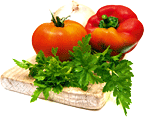 With the fast pace of life today, it’s hard to make time for fresh food. Why should you? Because food that’s fresh, especially if it’s locally grown, is often the healthiest diet choice out there. Fresh food contains a complete array of nutrients, which is just not available in many processed foods. Even in winter we can find root vegetables, apples and pumpkins.
With the fast pace of life today, it’s hard to make time for fresh food. Why should you? Because food that’s fresh, especially if it’s locally grown, is often the healthiest diet choice out there. Fresh food contains a complete array of nutrients, which is just not available in many processed foods. Even in winter we can find root vegetables, apples and pumpkins. 2. Beets
 Here’s an interesting fact: Beets were one of the most successful crops in the Biosphere project. Don’t remember the Biosphere project? Basically, it simulated living on the moon. And if you had to pick one vegetable to take with you to the moon, you’d do well to pick beets. The roots and leaves are packed with antioxidant phytochemicals, provide much-needed minerals and vitamins, and are a good source of fiber.
Here’s an interesting fact: Beets were one of the most successful crops in the Biosphere project. Don’t remember the Biosphere project? Basically, it simulated living on the moon. And if you had to pick one vegetable to take with you to the moon, you’d do well to pick beets. The roots and leaves are packed with antioxidant phytochemicals, provide much-needed minerals and vitamins, and are a good source of fiber.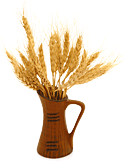 3. Rye
3. RyeObesity statistics suggest a good portion of us could use some help battling the scale, and rye is on your side. Rye has an excellent reputation for helping us feel full, produces a low insulin response, and is typically a good source of fiber. It is a rich source of minerals, too. But watch out! “Rye” breads can be a mix of different flour sources, so make sure whatever brand you get consists of whole grains in general, and rye in particular. And don’t forget – there are other ways to enjoy rye, like as a hot cereal (or porridge). One small study found that people who ate rye porridge for breakfast ate 16 percent less at lunch than those who ate white bread toast.
4. Organic Berries
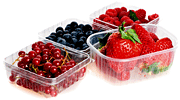 This isn’t a hard sell, right? Juicy, bright, and tasty, berries add fiber, vitamins and antioxidants to your diet. These little gems appear to support healthy arteries, cognition, inflammation and eyesight. Many studies have found a benefit in drinking cranberry or blueberry juice for prevention of urinary tract infections. But watch out for juice – sugary drinks aren’t on anyone’s top 10 lists! Eat the berries alone, in your cereal, or in a smoothie for the most benefit. And get organic berries when you can; when you can’t, rinse your berries well. Even frozen, they can retain pesticide residue, and that’s not good for anyone.
This isn’t a hard sell, right? Juicy, bright, and tasty, berries add fiber, vitamins and antioxidants to your diet. These little gems appear to support healthy arteries, cognition, inflammation and eyesight. Many studies have found a benefit in drinking cranberry or blueberry juice for prevention of urinary tract infections. But watch out for juice – sugary drinks aren’t on anyone’s top 10 lists! Eat the berries alone, in your cereal, or in a smoothie for the most benefit. And get organic berries when you can; when you can’t, rinse your berries well. Even frozen, they can retain pesticide residue, and that’s not good for anyone.5. Fermented foods
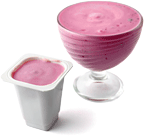 Face it Mr. Clean, the human body needs bacteria, and fermented foods provide “good” bacteria (probiotics) to give our native colonies a helping hand. Fermentation means that probiotics (like Lactobacillus andBifidobacterium) are added to foods (including miso, yogurt and sauerkraut), and the food is changed as the bacteria process it. Clinical trials continue to examine the benefits of probiotics on gastrointestinal complaints like diarrhea and irritable bowel syndrome, as well as for conditions such as colic and eczema in infants.
Face it Mr. Clean, the human body needs bacteria, and fermented foods provide “good” bacteria (probiotics) to give our native colonies a helping hand. Fermentation means that probiotics (like Lactobacillus andBifidobacterium) are added to foods (including miso, yogurt and sauerkraut), and the food is changed as the bacteria process it. Clinical trials continue to examine the benefits of probiotics on gastrointestinal complaints like diarrhea and irritable bowel syndrome, as well as for conditions such as colic and eczema in infants.6. Legumes
Don’t fear the beans! Yes, some legumes have “explosive” potential, but adding beans, lentils, or peas to our diet may be one way to keep us merrily dancing along.
This low-fat, no-cholesterol source of protein, fiber, vitamins, minerals, and phytochemicals is among the best foods we can eat. As a substitute for meat-based protein, beans can help support our drive for heart health. And the fiber and protein in legumes are excellent tools in our weight-management toolbox.
7. Cruciferous vegetables
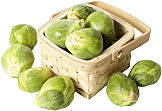 Broccoli, radishes, the dreaded Brussels sprouts and cabbage are all members of this illustrious family of veggies. Associations between low incidence of some cancers and high intake of cruciferous veggies have led to more in-depth research on how these unassuming vegetables contribute to a healthy diet. Crucifers are especially rich in phytochemicals (including isothiocyanates such as sulforaphane), both of which are responsible for these vegetables’ pungent or spicy flavor and appear to help the body’s detoxification processes. The phytonutrients in these vegetables also seem to affect the body’s ability to respond to free radicals. Steamed or raw, they retain the majority of their nutrients.
Broccoli, radishes, the dreaded Brussels sprouts and cabbage are all members of this illustrious family of veggies. Associations between low incidence of some cancers and high intake of cruciferous veggies have led to more in-depth research on how these unassuming vegetables contribute to a healthy diet. Crucifers are especially rich in phytochemicals (including isothiocyanates such as sulforaphane), both of which are responsible for these vegetables’ pungent or spicy flavor and appear to help the body’s detoxification processes. The phytonutrients in these vegetables also seem to affect the body’s ability to respond to free radicals. Steamed or raw, they retain the majority of their nutrients.8. Organic Figs
 Fresh or dried, these teardrops of deliciousness are a wonderful addition to any diet. High in fiber, potassium and manganese, figs can support heart health and weight management as part of a healthy diet and exercise program. They’re great on their own as dessert or a snack, and they make a wonderful addition to salad, too. Choose the organic ones, though, especially if you are sensitive to sulfites.
Fresh or dried, these teardrops of deliciousness are a wonderful addition to any diet. High in fiber, potassium and manganese, figs can support heart health and weight management as part of a healthy diet and exercise program. They’re great on their own as dessert or a snack, and they make a wonderful addition to salad, too. Choose the organic ones, though, especially if you are sensitive to sulfites.9. Fatty Fish
 In this case, fat is good. Cold-water fish (like salmon and sardines) contain a high concentration of omega-3 fatty acids (specifically EPA and DHA) that appear to have a host of health benefits. Large, rigorous trials from around the globe have found evidence that diets with the highest levels of omega-3 fatty acids are also the most heart healthy. The American Heart Association recommends that healthy adults should eat two, 3-ounce servings a week, which is in line with the American Diabetes Association and the World Health Organization. For more information on which fish are sustainable, consult the Monterey Bay Aquarium “Seafood WATCH(R)” list for your area (www.seafoodwatch.org/cr/cr_seafoodwatch/download.aspx).
In this case, fat is good. Cold-water fish (like salmon and sardines) contain a high concentration of omega-3 fatty acids (specifically EPA and DHA) that appear to have a host of health benefits. Large, rigorous trials from around the globe have found evidence that diets with the highest levels of omega-3 fatty acids are also the most heart healthy. The American Heart Association recommends that healthy adults should eat two, 3-ounce servings a week, which is in line with the American Diabetes Association and the World Health Organization. For more information on which fish are sustainable, consult the Monterey Bay Aquarium “Seafood WATCH(R)” list for your area (www.seafoodwatch.org/cr/cr_seafoodwatch/download.aspx).10. Whatever You Don’t Eat Now
 Variety is important. It’s so easy to get stuck in a food rut, especially if you’re counting calories. So instead of eating yogurt and cherries as a snack every day, why not try oatmeal and blueberries? Or string cheese and an apple? Buying a farm share or visiting a farmer’s market can be a good way to try new vegetables. And if something looks unusual – pick it up! You can put the power of the Internet to good use and find a recipe for anything in seconds flat. So try a purple pepper or a golden beet. A vibrant rainbow on the plate means more and varied nutrients for the body.
Variety is important. It’s so easy to get stuck in a food rut, especially if you’re counting calories. So instead of eating yogurt and cherries as a snack every day, why not try oatmeal and blueberries? Or string cheese and an apple? Buying a farm share or visiting a farmer’s market can be a good way to try new vegetables. And if something looks unusual – pick it up! You can put the power of the Internet to good use and find a recipe for anything in seconds flat. So try a purple pepper or a golden beet. A vibrant rainbow on the plate means more and varied nutrients for the body.Sara Tiner, BA, BS, MS, is the coordinator of scientific communication for a whole-food supplement manufacturer in Wisconsin. With undergraduate degrees in biology and English from Ripon College, and a master’s degree in journalism from Columbia University, she’s worked as a science writer in both print and radio over the past decade, and moonlights as a freelance contributor to various publications.

Recent Comments